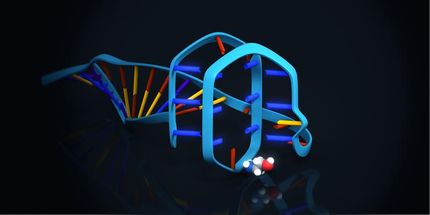Alternatives to the use of transgenic animals
Experts evaluated the current status of the use of genetically modified animals in research and discussed alternative methods
Advertisement
The number of laboratory animals used for scientific purposes has been steadily rising during recent years. This increase is also attributable to the growing use of transgenic animals. Transgenic animals are genetically modified organisms in which genes have been knocked-out or knocked-down or where xenogenous genetic material has been incorporated into their genotype. At the end of May an international expert meeting was held at the Federal Institute for Risk Assessment (BfR) in order to discuss alternatives to the use of transgenic animals in industry and science, and to identify the main areas of further research necessary. "Genetically modified animals have opened up new areas of research in diseases by facilitating the elucidation of their molecular mechanisms", said BfR President Professor Dr. Dr. Andreas Hensel. "But also in this field, animal experiments should only be conducted when all other methods avoiding laboratory animals have been utilized in the run-up or a specific problem can only be addressed and solved through their use."
In 2007 2.7 million vertebrates were used in Germany for animal experiments and other scientific purposes. Since 1998 there has been an increase in the consumption of animals for research purposes which is largely attributable to the growing use of transgenic animals. They are, for instance, suitable as models to mimic human diseases like diabetes, cancer or Alzheimer's. Transgenic model organisms help to facilitate, improve and, in some cases, even allow in the first place research into diseases and the development of treatment.
At the end of May 2009 experts from seven European countries and Australia came together to discuss the use of transgenic animals in research at an international BfR workshop. The focus of their discussions was on opportunities and strategies to reduce the growing number of transgenic laboratory animals. Here, the so called ‘3Rs principle’ that seeks to Replace or Reduce animal experiments or Refine the suffering of animals while in experiments, built the basics of their discussions.
The experts examined methods which possibly could be utilized to replace experiments with transgenic vertebrates in mid-term future. Among those, for instance, alternative model organisms like the fruit fly Drosophila melanogaster or the threadworm Caenorhabditis elegans can be instrumental. Specific cell culture experiments or three-dimensional tissue cultures also offer valuable opportunities for replacing experiments with transgenic animals or, at least reducing the number of laboratory animals required. For instance, at the workshop one technique was presented which permits the production of human antibodies without using genetically modified animals. Up to now genetically modified mice had usually been used for this purpose.
Measures like improved breeding and reproduction methods or improved training of laboratory personnel and animal keepers can also help to reduce the numbers of laboratory animals. Well-trained staff can help to minimise the pain, suffering and discomfort of animals and, at the same time, improve the quality of data obtained from animal experiments. This, in turn, can lead to a reduction in the numbers of animals needed for each test group and repetitions of experiments might be spared.
The experts also came to the conclusion that the numbers of laboratory animals can be reduced by improved documentation of completed experiments involving transgenic animals and the free-of-charge provision of data and results for research purposes in a central database. Another opportunity for reduction is the provision of information on existing in-vitro models and their respective opportunities for use.
The experts felt that the greatest potential for reducing the numbers of laboratory animals in the near future might not be offered by the complete replacement of transgenic animal models but by the opportunities for examining individual questions to a greater degree in in-vitro models such as cell and tissue cultures. The use of these models would lower animal numbers also in the case of experiments that could not be replaced up to now, and would alleviate their suffering (‘reduction’ and ‘refinement’). In both cases, the numbers of required animals would also fall in those areas where animal experiments are still indispensable.
Other news from the department research and development
Most read news
More news from our other portals
See the theme worlds for related content
Topic world Antibodies
Antibodies are specialized molecules of our immune system that can specifically recognize and neutralize pathogens or foreign substances. Antibody research in biotech and pharma has recognized this natural defense potential and is working intensively to make it therapeutically useful. From monoclonal antibodies used against cancer or autoimmune diseases to antibody-drug conjugates that specifically transport drugs to disease cells - the possibilities are enormous

Topic world Antibodies
Antibodies are specialized molecules of our immune system that can specifically recognize and neutralize pathogens or foreign substances. Antibody research in biotech and pharma has recognized this natural defense potential and is working intensively to make it therapeutically useful. From monoclonal antibodies used against cancer or autoimmune diseases to antibody-drug conjugates that specifically transport drugs to disease cells - the possibilities are enormous



























































